Mission Statement: “Bartram Trail will serve as a center for academic excellence, community involvement and character development, while fostering a joy for lifelong learning”
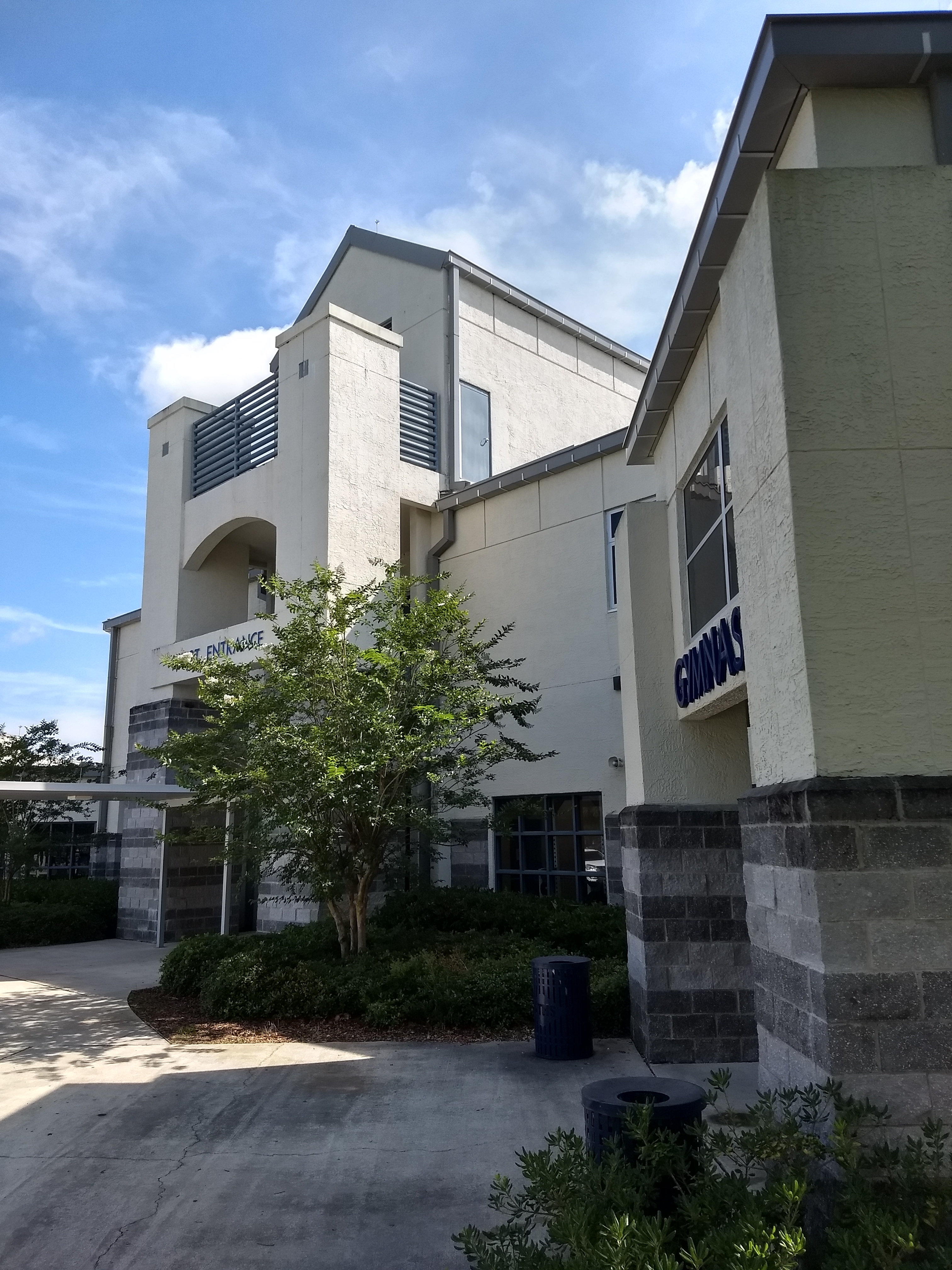
School Mascot: Bears
School Colors: Blue, Black, and Silver
Average School Enrollment: 2500 students
Established: 2000
Community/History
St. Johns County is bordered by the Atlantic Ocean on the east, the picturesque St. Johns River on the west, metropolitan Jacksonville on the north and rapidly growing Flagler County on the south. Year round mild temperatures, miles of sandy beaches, the distinction of having America’s Oldest City (St. Augustine), and an internationally recognized sports haven, all add to the allure of the county to both residents and tourists alike. Located in the northwest quadrant of St. Johns County, Bartram Trail High School (BTHS) officially opened the doors to its first students in 2000.
The land for Bartram Trail High School was purchased in January 1999 and was constructed by Arcadis. The Bartram Trail High School campus takes up one hundred and twenty acres of land and the school building takes up 190,000 square feet (18,000 m2). The school building is a two-story octagon with an open-air courtyard in the center. The cafeteria and media are located within the main building, while the gymnasium and auditorium with a stage are attached on the south and north sides, respectively.
“V Victory” Statue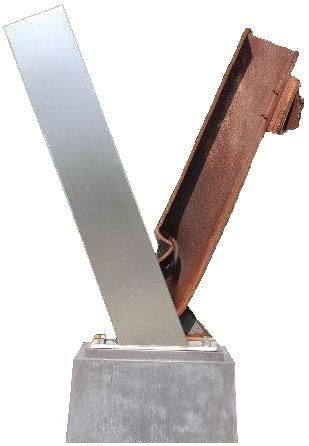
In our courtyard stands our “V Victory” statue. The concept behind the sculpture, created by Bartram Trail art teacher Robert Kirk, was that the piece of World Trade Center debris was to be one-half of the letter “V” while the other half was to be made of pristine stainless steel. The “V” was to stand for “Victory”, and was to symbolize the “somber tragedy and the unity of American resolve.” The sculpture was unveiled in Bartram Trail’s courtyard on September 11, 2002, one year after the attacks, with Florida Governor Jeb Bush attending the ceremony. Only seventy-three pieces of World Trade Center debris were donated, and it is believed that this was the only piece in Florida and the only piece in an American high school.
Super Bowl XXXIX
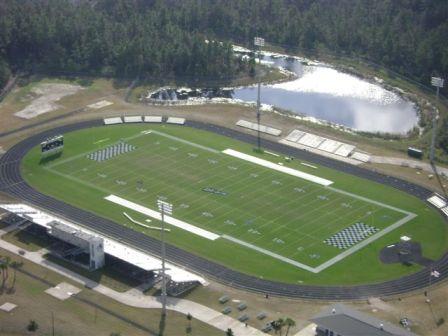 For Super Bowl XXXIX in 2005, Bartram Trail High School was selected by the NFL as the practice facility for New England Patriots. Bartram Trail was selected by the NFL because the World Golf Village was chosen as the New England Patriots lodging and the practice field had to be within twenty minutes of their hotel. Bartram Trail was also selected because the school’s location was remote with little traffic and interference and because the walk from the lockers to the field was short enough. Bartram Trail was the first high school ever that was chosen to be the practice facility for a Super Bowl team.
For Super Bowl XXXIX in 2005, Bartram Trail High School was selected by the NFL as the practice facility for New England Patriots. Bartram Trail was selected by the NFL because the World Golf Village was chosen as the New England Patriots lodging and the practice field had to be within twenty minutes of their hotel. Bartram Trail was also selected because the school’s location was remote with little traffic and interference and because the walk from the lockers to the field was short enough. Bartram Trail was the first high school ever that was chosen to be the practice facility for a Super Bowl team.
The NFL made modifications to Bartram Trail, installing new lockers, making a new practice field and modifying their game field to professional standards. The field modifications, however, were delayed by Hurricane Francis and caused them to start over several times. Bartram Trail’s field was considered one of the top five high school fields in Florida, but the problem was that the field was supported by dirt, instead of sand. To fix this, the NFL modified Bartram Trail’s football field by building the fields up with two hundred loads of sand, adding a drainage system and building the slope, crown and type of grass to the same specifications as Jacksonville Municipal Stadium. Students from the Bartram Trail turf management classes worked with George Toma, who had built all thirty-nine fields for the Super Bowl games, in building and maintaining the field.
After the two weeks of practice in Bartram Trail, a few of the New England Patriots and owner Robert Kraft came in on the last day to talk with the students and thank them for their hospitality, as New England head coach Bill Belichek had done earlier in a morning press conference.
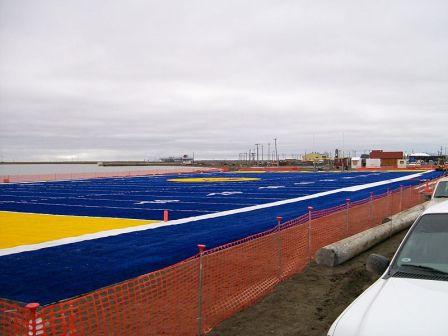 Project Alaska Turf
Project Alaska Turf
In February 2007, Project Alaska Turf was started by Cathy Parker, a Bartram Trail High School parent and wife of a Bartram Trail football offensive coordinator.Project Alaska Turf was inspired by an Emmy Award winning ESPN documentary by Wayne Drehs on a community in Barrow, Alaska. The documentary focused on a football program that was implemented in order to reverse high teen suicide rates, accelerated drop out rates and increased teen drug abuse. Project Alaska Turf was funded by Bartram Trail, the Jacksonville Jaguars, ProGrass and the Grimes Companies. The project was aimed at raising money to provide a football team, the Barrow Whalers, an artificial turf field to replace their gravel-covered field. Since Barrow, Alaska is above the Artic Circle, grass doesn’t grow there, resulting in their football field being made of dirt and gravel and causing injury to the players. The original goal was to raise $500,000 to make the field, but the ending target was eventually set to $800,000. The money covered the cost of buying, shipping and installing all one hundred and sixty tons of turf.
The Barrow Whalers were invited to Florida on May 17 through the May 19 but the Whalers didn’t arrive until June. Restaurateurs and other business owners provided them free room and board upon their arrival. During their visit to Jacksonville, they toured Jacksonville Municpal Staduim, where they ate lunch with several Jacksonville Jaguar players.
The field was completed with $700,000 generated from the donation; $100,000 short of the goal. The Bartram Trail community worked for a long period of time and managed to move the field from Florida to Alaska by trucks, boats, trains, and on airplanes with help from ten different companies. The field was opened in time for the Barrow Whalers first game on August 17, 2007, which they won, 18-16, after being down by two touchdowns with three minutes left in the game. The game was the first live internet broadcast of a sporting event in the United States from north of the Arctic Circle and had NBC, ABC, ESPN, and most of Alaska’s media there to cover the event.
